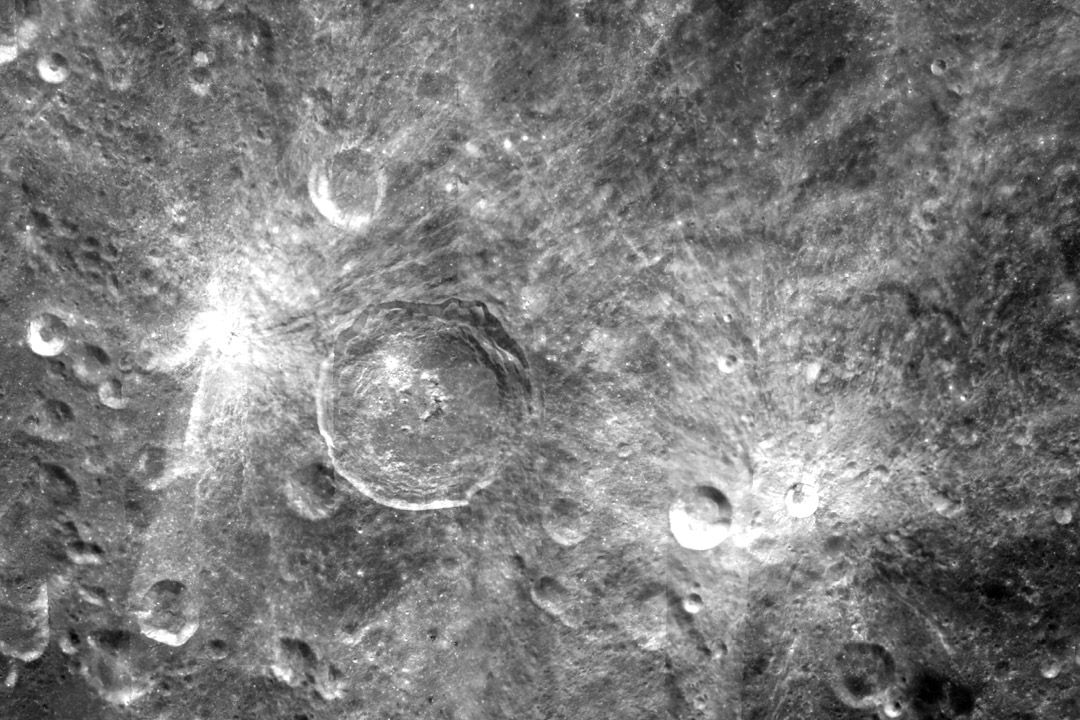
image from Clementine by way of Map-A-Planet
A pair of small craters with the brightest rays in the Moon’s southeast quadrant bracket Stevinus. To the west is Stevinus A, an 8.2 km diameter simple crater, and to the east is a 12 km crater just east of Furnerius C. This ray crater - exactly the type of conspicuous landmark that should have a designation - used to be named Furnerius A, but it is unlabelled in either Rükl’s Atlas of the Moon or The Clementine Atlas of the Moon. On Earth-based images with high Sun the two craters are surrounded by large bright nimbuses that make them difficult to see. The Clementine image above was processed to enhance the faint rays streaming northward of both craters, resulting in the craters being saturated. Look closely to see that Stevinus A has some ray material to the south, but that nearly all the rest of its rays define a narrow fan pointing towards the northeast. Similarly, for Furnerius A there is diffuse brightness south of the crater but its rays fan out toward the north. It appears that both of these craters resulted from oblique impacts that focused their rays down range. There has been uncertainty about the length of these rays, with some suggestion that the ray passing through the west side of Mare Nectaris is from Stevinus A. It would be a good project to try to photographically document the extent of these rays with high resolution, high Sun imaging. Radiating from Stevinus A, just north of Stevinus, is a series of dark ribbons that don’t look like rays - I wonder what they are.
Charles Wood
Technical Details
Related Links:
Rükl plate 69
A full Moon view
More rays in this area
COMMENTS?
Click on this icon File:PostIcon.jpg at the upper right to post a comment.



